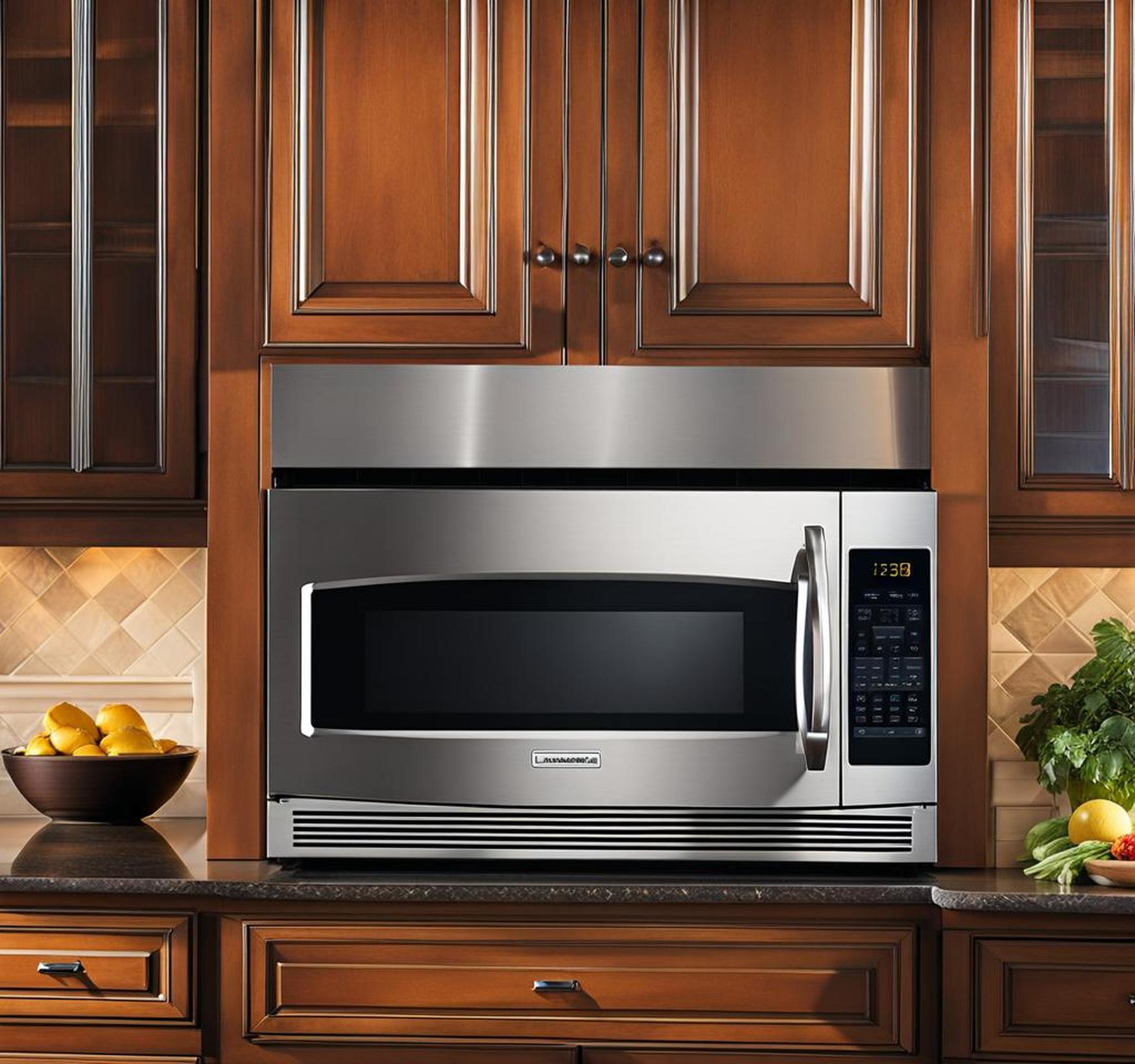Installing an over-the-range microwave can be a great way to save space in your kitchen. However, like all microwaves, over-the-range models require proper ventilation to function correctly and prevent issues like the buildup of heat, grease, and moisture.
Ducted Venting Systems
A ducted venting system exhausts heat, smoke, grease, and other cooking byproducts outside of your home through a duct and exterior vent. Here’s a closer look at how they work and their pros and cons:

How Ducted Venting Systems Work
Ducted microwave venting systems utilize an exhaust fan inside the microwave which pulls air through internal grease filters. The air then travels through ductwork running from the rear of the microwave through cabinets or walls and outside. The duct terminates at an exterior vent, releasing the filtered air outside.
Benefits of Ducted Systems
There are several compelling reasons to choose a ducted over-the-range microwave venting system:
- Effectively removes smoke, odors, moisture, and grease rather than recirculating it
- Complies with legal codes and standards for kitchen ventilation in most areas
- Prevents grease buildup on kitchen surfaces
- Good option for frequent cooks or fryers/broilers
Potential Drawbacks of Ducted Systems
The main downsides of ducted venting to consider are:
- More difficult and expensive to install due to ductwork
- Requires making openings through walls and/or cabinets for ducts
- Needs adequate space outdoors for external vent termination
Ductless Venting Systems
Rather than venting heat and contaminants outside, ductless venting systems use filters and an internal fan to remove some particles and recirculate cleaned air back into the kitchen.
How Ductless Systems Work
Ductless over-the-range microwave venting relies on a set of grease filters to trap some cooking residues. An internal fan then pulls the air through the filters and either directs it into the space between the cabinet and ceiling or back into the kitchen through vents on the microwave face.
Benefits of Ductless Venting
Here are some of the most notable upsides to ductless venting systems:
- Cheaper and easier to install without exterior ductwork
- Shorter installation time since no household modifications needed
- No need to vent air or cooking odors outdoors
Potential Drawbacks of Ductless Systems
Some key downsides exist as well with ductless systems:
- Limited ability to capture grease, moisture, and odors
- Can allow lingering cooking smells in kitchen
- May not comply with legal ventilation requirements
- Typically weaker airflow than ducted
Key Considerations for Choosing Vent System
Selecting the ideal over-the-range microwave venting system for your home depends on several factors:
Your Cooking Style
How often you cook and what types of food prep you do affects which system best meets your ventilation needs:
- If doing heavy frying or broiling, lean towards ducted
- Bake-only cooking likely OK with ductless ventilation
Budget
Ductless systems generally cost $75 – $150 less in both microwave unit price and install costs.
Kitchen Size and Layout
Small or galley kitchens often suit ductless systems fine for odor control. Large kitchens used frequently benefit more from ducted.
Local Regulations
Building codes in your area may dictate specific legal requirements for kitchen ventilation in new construction or remodels.
Existing Infrastructure
Presence of existing ductwork or easier access to route ducting outside can influence which system works better retrofit.
Recommendations for Professional Install
Given the critical nature of effective ventilation, we recommend professional microwave installation in most cases to ensure optimal function.
Ensuring Proper Clearance
Experts will guarantee the unit sits at the manufacturer’s recommended height above the cooktop for proper airflow.
Checking Ductwork
A pro can test ducting thoroughly for leaks, blockages, or size issues.
Installation Costs
With extra ductwork, electrical work, potential cabinet modifications, and multiple hours labor, most homeowners spend $170 – $300 to have an over-the-range microwave professionally installed.
Frequently Asked Microwave Venting Questions
Below we answer some other common queries around over-the-range microwave venting systems:
Do I Really Need a Vent with a Microwave?
Venting is strongly recommended. Microwaves produce significant moisture and heat. No vent risks condensation buildup damaging cabinets or walls long-term.
What’s the Difference Between Ducted and Ductless?
Ducted vents outside removing contaminants. Ductless filters some particles and recirculates air into kitchen.
Which System is Better?
For most kitchens, ducted is better. But ductless can suit occasional cooking in smaller kitchens fine per local codes.
How Hard Are These Systems to Install?
Ductless is easier as a DIY project. Ducted is complex; professional installation strongly advised.
How Can I Ensure Effective Venting?
Annual inspection of grease filters, fans, ducts by a professional contractor ensures optimal microwave ventilation.
We hope this overview gives you a better sense of the over-the-range microwave ventilation options available to best suit your cooking style, kitchen, and budget.
Pay close attention to local codes, have existing ductwork or installation requirements checked by a professional, and don’t hesitate to ask manufacturers your questions as you determine the ideal venting solution.
